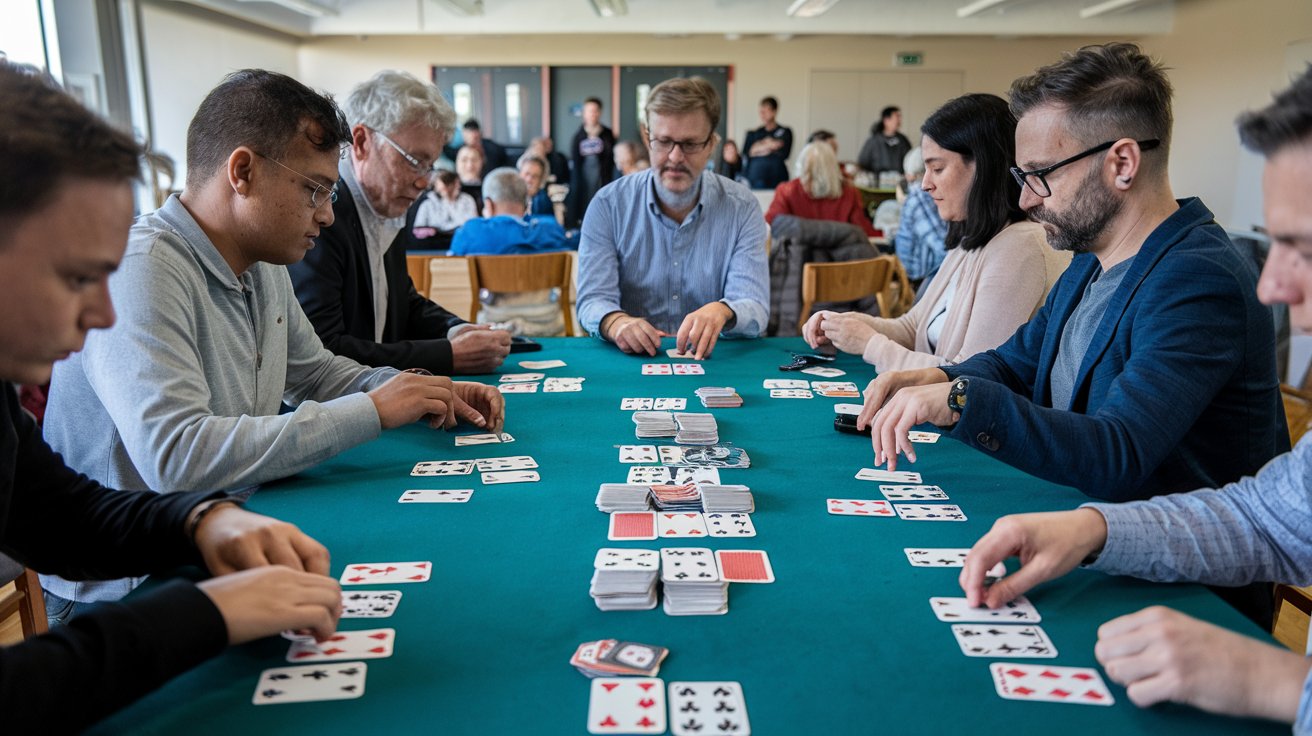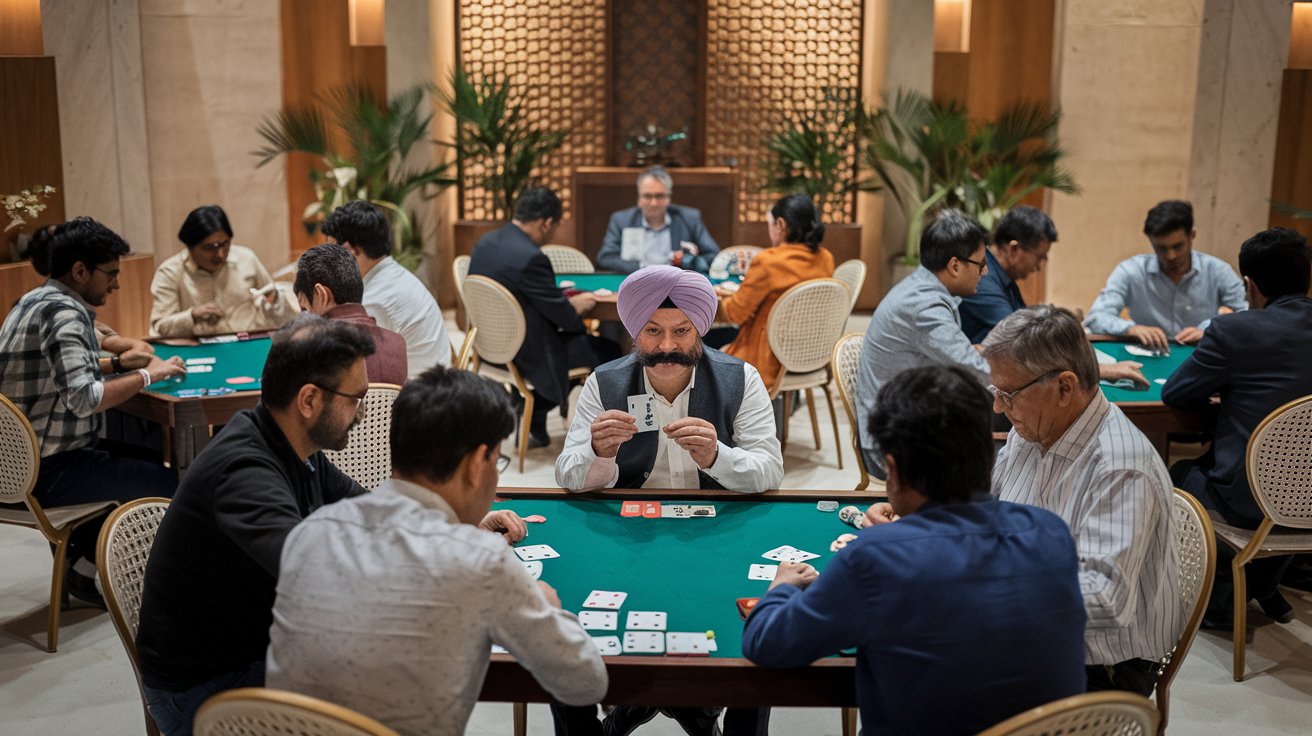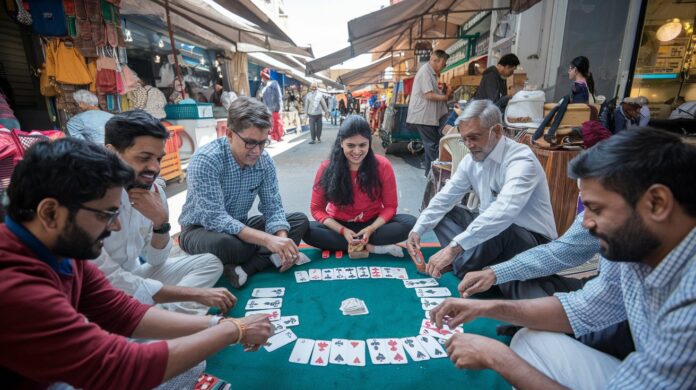Card games have long been a cherished part of Indian culture, weaving their way into family gatherings, festive celebrations, and casual hangouts. Among these games, Rummy stands out as a titan—a game that has not only entertained generations but also profoundly influenced the evolution of card game culture in India. From its humble origins to its modern digital avatar, Rummy’s journey reflects India’s love for strategy, skill, and social connection. In this blog, we’ll explore how Rummy has shaped India’s card game landscape, its historical roots, cultural significance, and its thriving presence in the digital age.
The Origins of Rummy in India: A Game with Deep Roots
Rummy’s story in India begins with a blend of global influences and local adaptation. While the game’s precise origins are debated, many trace its roots to the 19th-century card game Conquian, believed to have originated in Mexico or Spain. It likely reached India through British colonial rule, as card games were a popular pastime among British officers and the Indian elite. Over time, Indians embraced Rummy, tweaking its rules to suit local preferences and infusing it with a unique flavor.
Unlike many Western card games that rely heavily on chance, Rummy’s emphasis on skill—forming sets and sequences—resonated with India’s love for strategic thinking. This adaptability allowed Rummy to transcend social and economic barriers, becoming a staple in rural villages and urban households alike. Whether played with a worn-out deck on a charpoy or during a Diwali party with friends, Rummy became more than a game—it became a cultural phenomenon.
Rummy’s Role in Social Bonding

In a country as diverse as India, where languages, cuisines, and traditions vary every few hundred kilometers, Rummy has emerged as a unifying force. The game’s simple rules and endless replayability make it accessible to players of all ages and backgrounds. It’s not uncommon to see grandparents teaching their grandchildren the art of melding cards or friends engaging in spirited banter over a late-night Rummy session.
Rummy’s social appeal lies in its ability to foster connection. Unlike solitary games, it thrives in group settings, encouraging conversation, laughter, and friendly rivalry. During festivals like Diwali, when gambling is a traditional activity, Rummy takes center stage alongside Teen Patti. Families gather around tables, stakes ranging from a few rupees to bragging rights, as the game becomes a conduit for storytelling and bonding.
This social aspect has cemented Rummy’s status as a cultural ritual. It’s not just about winning—it’s about the shared experience, the debates over strategy, and the joy of outsmarting an opponent. In this way, Rummy has shaped how Indians view card games: not as mere entertainment, but as a means of building relationships.
The Evolution of Rummy: From Physical Decks to Digital Screens
While Rummy’s traditional form remains beloved, its evolution into the digital realm has revolutionized its place in Indian card game culture. The rise of smartphones and affordable internet access has brought Rummy to millions of new players, transforming it from a tabletop pastime to a global phenomenon.
Online Rummy platforms like RummyCircle, Junglee Rummy, and Ace2Three have capitalized on India’s growing tech-savvy population. These platforms offer a seamless experience—players can join games anytime, anywhere, with opponents from across the country. Features like tutorials, practice modes, and real-time multiplayer options have made the game more accessible, even to beginners.
The shift to digital has also introduced new formats, such as Points Rummy, Pool Rummy, and Deals Rummy, each adding layers of complexity and excitement. Tournaments with cash prizes have further elevated Rummy’s status, turning casual players into serious competitors. In a sense, the digital age has democratized Rummy, breaking down geographical barriers and inviting a younger demographic to embrace the game.
Yet, this transition hasn’t been without challenges. Concerns over gambling laws and addiction have sparked debates about the legality of online Rummy. In India, Rummy is classified as a game of skill rather than chance, granting it legal protection in most states. However, the fine line between entertainment and obsession continues to shape public perception and regulatory discussions.
Rummy’s Influence on Other Card Games in India

Rummy’s dominance has left an indelible mark on India’s broader card game’s ecosystem. Its focus on skill and strategy has influenced the popularity of other games, such as Teen Patti and Bridge, which also blend luck with tactical prowess. However, Rummy’s versatility sets it apart—it can be played casually or competitively, with minimal equipment, making it a benchmark for card game design.
Take Teen Patti, for instance, often dubbed “Indian Poker.” While it shares Rummy’s social appeal, it leans more heavily on bluffing and chance. Rummy’s structured gameplay, requiring players to organize cards into valid sets, has inspired variations in other games, encouraging a shift toward skill-based mechanics. Even in informal settings, players often borrow Rummy’s concepts—such as discarding and drawing—to create hybrid games tailored to their preferences.
Moreover, Rummy’s success has spurred innovation in the gaming industry. Developers now look to replicate its winning formula: a balance of accessibility, engagement, and replay value. This ripple effect underscores Rummy’s role as a trendsetter, shaping not just how card games are played but how they’re perceived in modern India.
The Cultural Symbolism of Rummy
Beyond mechanics, Rummy carries symbolic weight in Indian culture. The game mirrors life’s unpredictability—each hand dealt is a fresh challenge, requiring patience, adaptability, and foresight. In a society that values resilience and resourcefulness, Rummy’s lessons resonate deeply. Players learn to make the best of what they’re given, a philosophy that aligns with India’s ethos of thriving amid diversity and complexity.
During festivals, Rummy also takes on a ritualistic role. Diwali, the festival of lights, is synonymous with card games, where Rummy reigns supreme. The act of playing is seen as auspicious, a way to invite prosperity and test one’s luck for the year ahead. This blend of tradition and entertainment has made Rummy a cultural artifact, passed down through generations like a family heirloom.
Rummy in Pop Culture: A Game That Inspires

Rummy’s influence extends beyond the table into Indian pop culture. Bollywood films often depict card games as a backdrop for drama or comedy, with Rummy frequently stealing the spotlight. Scenes of characters huddled over a deck, plotting their next move, evoke nostalgia for viewers who grew up playing the game. Songs, TV shows, and even advertisements have embraced Rummy as a symbol of wit and camaraderie.
The game’s prominence in pop culture has also fueled its digital surge. Celebrities endorsing online Rummy platforms have brought it into the mainstream, appealing to a younger audience eager to try their hand at this timeless classic. This visibility ensures that Rummy remains relevant, bridging the gap between tradition and modernity.
Why Rummy Endures: The Perfect Blend of Skill and Fun
So, what makes Rummy so enduring in India’s card game culture? The answer lies in its universal appeal. It’s easy to learn yet difficult to master, offering endless possibilities with every shuffle. Unlike games that rely solely on luck, Rummy rewards observation, memory, and planning—qualities that appeal to India’s competitive spirit.
Its adaptability is another strength. Whether played with 13 cards (Indian Rummy) or 21 cards (a regional variant), with two players or ten, Rummy molds itself to the occasion. This flexibility has allowed it to thrive in a country where diversity is the norm, ensuring its place in both rural tea stalls and urban gaming apps.
Finally, Rummy’s social nature keeps it alive. In an era dominated by screens and isolation, it offers a rare chance to connect face-to-face—or virtually—with others. It’s a game that celebrates human interaction, making it a cornerstone of Indian leisure.
The Future of Rummy in India
As India marches toward a digital future, Rummy’s trajectory looks promising. The online gaming industry is booming, with projections estimating its worth at over $2 billion by 2025. Rummy, with its massive player base, is poised to lead this growth. Innovations like AI-driven opponents, virtual reality gameplay, and blockchain-based fairness could redefine how the game is experienced.
Yet, its essence remains unchanged. Whether played with a physical deck under a flickering lantern or on a sleek app with thousands online, Rummy’s core—strategy, skill, and connection—endures. It’s a testament to its staying power that even as technology evolves, the game retains its soul.
Conclusion: Rummy’s Lasting Legacy
Rummy has done more than shape India’s card game culture—it has become a thread in the nation’s social fabric. From its colonial origins to its digital renaissance, it has adapted, evolved, and thrived, reflecting India’s ability to embrace the old while welcoming the new. It’s a game that transcends generations, regions, and platforms, uniting people in a shared pursuit of fun and mastery.
As you shuffle your next deck or log into an online game, consider this: Rummy isn’t just a pastime—it’s a cultural legacy, a slice of India’s heart dealt one card at a time. So, how has Rummy shaped card game culture in India? By being more than a game—by being a way of life.

Zareb Saleh is a journalist at Gulf Today and a ghostwriter for Gameoholic, specializing in gaming, technology, and digital culture. With a keen eye for industry trends, he delivers insightful stories that engage and inform readers.




